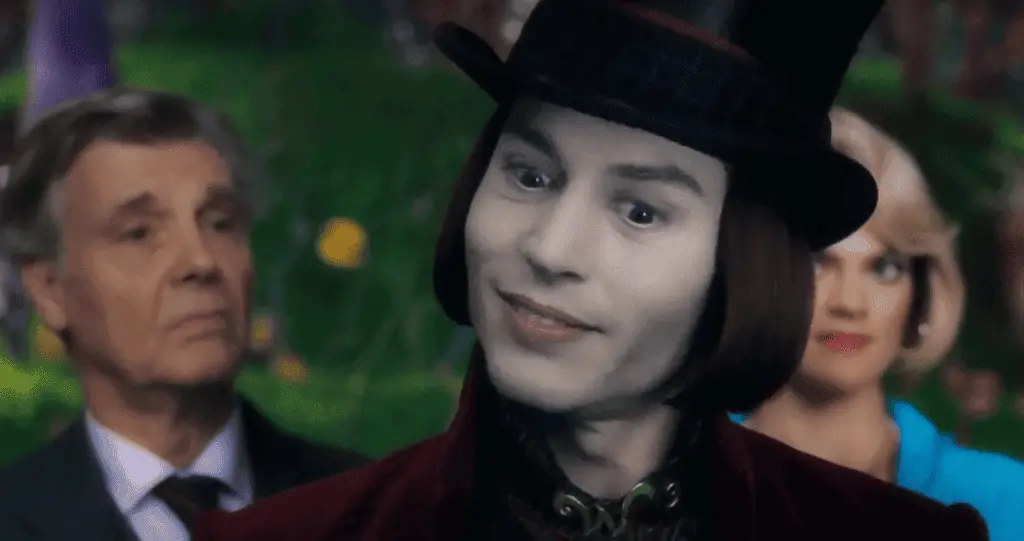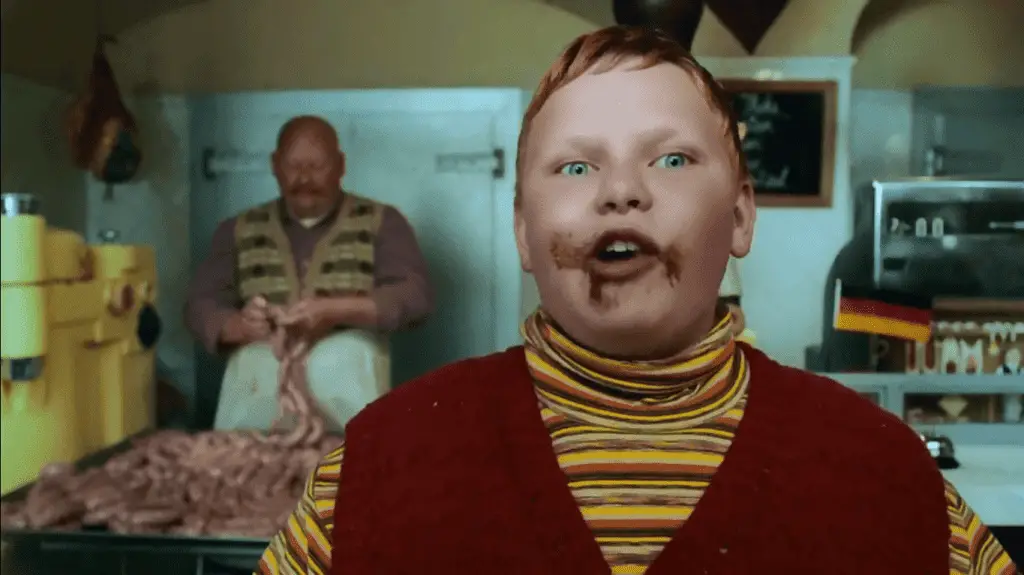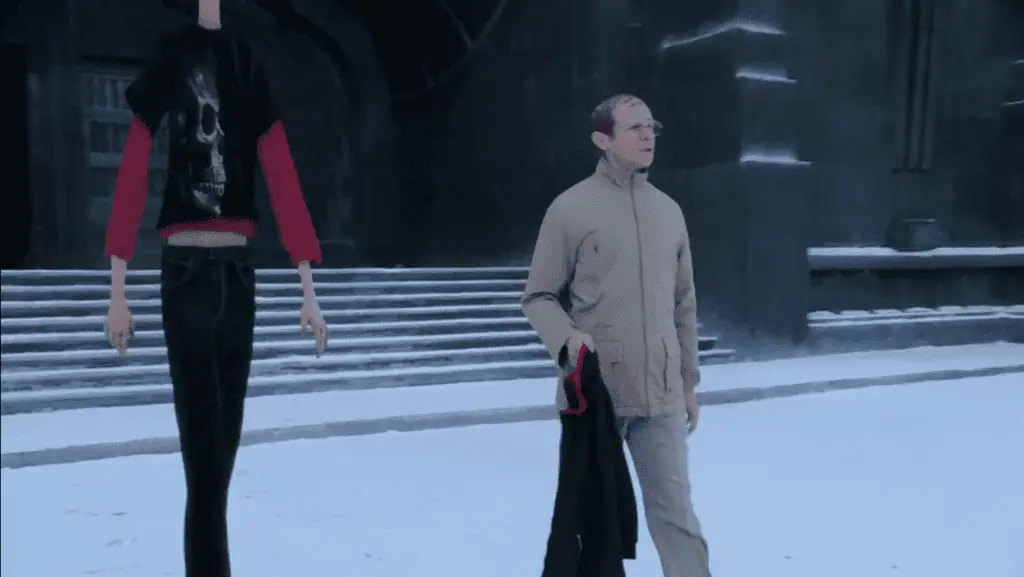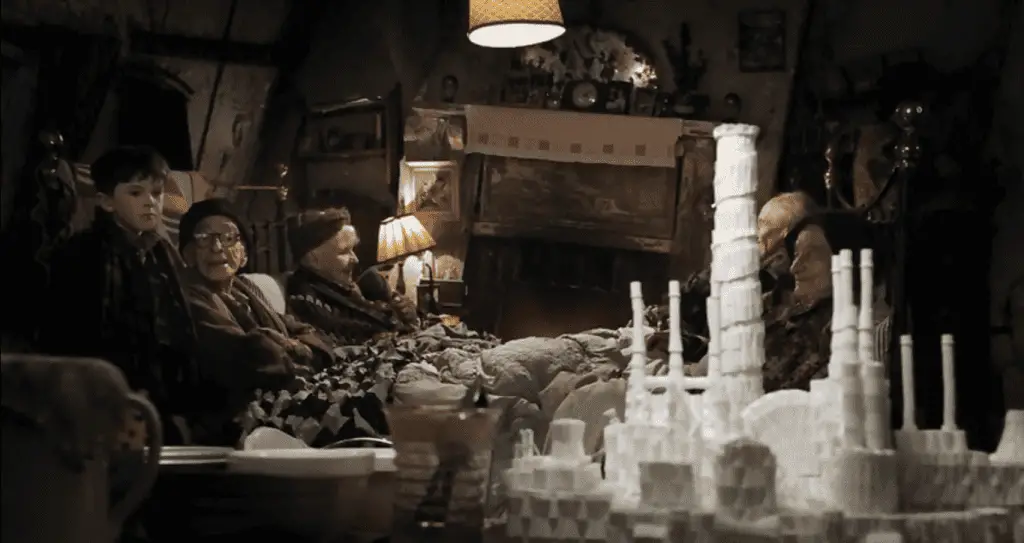Charlie and the Chocolate Factory: a film for adults and possibly children
In 2005, Tim Burton shot one of his most famous films: Charlie and the Chocolate Factory, based on the fairy tale novel of the same name by Roald Dahl. It is worth noting that this British writer, who was born into a family of immigrants from Norway, in principle wrote rather peculiar fairy tales and not entirely trivial children’s books. Black humor, rejection of sugaryness, sentimentality and “pink snot” is inherent in almost every piece of his. And Charlie and the Chocolate Factory is no exception to this rule.

The filmmakers did a great job on the fabulous scenery, and many of them were really edible.
Therefore, it is not at all surprising that such a plot interested Tim Burton. The latter, in principle, is known for his love of horror stories, monsters, the theme of death and cruel plot twists, wrapped in a terrifyingly charming pseudo-fairy wrapper. It is worth noting that Burton was not the first in his desire to film Charlie and the Chocolate Factory: in 1971, a film was already filmed based on the book, which brought fame to Gene Wilder, who played Willy Wonka, and was criticized by Roald Dahl himself. Unfortunately, the writer did not live up to the release of the new film adaptation, but it can be assumed that he would have liked it more: Dahl always wanted the main character to be Charlie, and not Willie Wonka, and Tim Burton, in fact, practically did not shift his emphasis with a younger character.

Dahl criticized the first version of the film adaptation of his book because of excessive attention to Willy Wonka
Willy Wonka: either regret it or hate it
In his story, Roald Dahl quite specifically divides the “good” and “bad” children’s characters into poles, but Willy Wonka turned out to be rather ambiguous. And this ambiguity was very elegantly conveyed by Tim Burton with Johnny Depp. On the one hand, we are shown Willie as a traumatized person who suffered from his father’s excessive severity as a child and, as a result, made the production of sweets that he hated as his life’s work. By the way, the flashbacks from Wonka’s childhood were invented by the scriptwriters, they are not in the book.
On the other hand, you cannot say that Willie is unhappy, nor can you call him kind-hearted. He is quite happy with his life, he has built a whole chocolate empire and even an incredible chocolate world inside his factory, he is quite confident in himself and has a very negative attitude towards any criticism. He ruthlessly and rather severely punishes children, and even, most likely, enjoys it. Obviously, he deliberately leads his little guests to those workshops, where various “traps” await them, and does everything to get them caught. And, in the end, he kicks out Charlie, whom he wanted to make his student and heir, as soon as he stutters about his unwillingness to part with his family.

Willy Wonka, at least, does not spare the punished children, as a maximum – enjoys their torment
At the end of the film, the impression softens a little: who did not want to hear anything about family ties, Willy Wonka makes peace with his father and invites Charlie and all his relatives to his factory. Although, perhaps, if he had not lost the ability to invent new sweets, upset with Charlie’s refusal, he would not have done any of this. In a word, this is how he is: not too good, not too bad. Not a villain, but certainly not a hero. Perhaps compassionate, perhaps more irritating. And the quirky appearance of the character, which is a collective image, on which both Burton and Depp worked, ideally complements his ambiguous behavior.
Conditionally bad kids
In fairness, it should be noted that Roald Dahl’s work has been periodically criticized due to the fact that four “bad” children are depicted as too negative and even, in fact, personify mortal sins: Veruca Sol can be weaved to greed, Violet Beauregard to pride, to idleness – Mike Teavee, and, finally, to gluttony – August Fool.

For the sake of fairness, it should be noted that the development of vices in “bad” children is largely promoted by their own parents.
Such hypertrophied negative images can be explained by the fact that the work is still theoretically childish, and such a technique is used very often in children’s fairy tales and stories. However, this is one of the reasons why “Charlie and the Chocolate Factory” is not always called the best movie for watching with children. Seeking out negative traits in others and sticking labels on them based solely on shortcomings is still not the best thing for the younger generation. However, if you correctly explain to the small viewer that in real life people are much more multifaceted than in the film, then you can turn it on to children without any twinges of conscience.
Serious punishments for childhood vices
All “bad” children were punished very subtly. Augustus Fool was sucked into the drain pipe when, in a fit of gluttony, he wanted to drink the Chocolate River. Violet Beauregard, who tried the experimental gum that included a three-course meal, turned purple and bloated. Veruca Sol, who wanted to replenish her zoo with one of the squirrels that worked in the Nut Shop, ended up in a garbage chute. And finally, Mike Teavee, whose “kryptonite” was the Teleshokokolkatelny shop, shrunk in size, and then was sent to the “pulling machine”, becoming two-dimensional.

We are never given to understand whether the “bad” children will recover from what happened to them at the chocolate factory.
Of course, this is all – hyperbole, which should not be taken too close to heart, and which once again emphasizes the character of the fabulous story. However, this fabulousness is sustained in the style of the terrible works of the Brothers Grimm, which many authors tried to soften and embellish, adapting them for children of more modern generations. And this is another reason that makes the question of watching “Charlie and the Chocolate Factory” with children open.
Charlie Bucket is a neutral hero
Although Roald Dahl considered Charlie Bucket to be the central character of his book, his personality became another topic that many critics lingered on. In fact, Charlie can be called a walking stereotype: a modest, quiet and polite boy from a poor family, accustomed to not demanding anything and obediently obeying the orders of his elders. If for “bad” children the author colorfully prescribed pronounced shortcomings, then for Charlie he left only meekness, good manners and poverty. In other words, critics have often pointed out that all the “positivity” of the boy is simply the absence of “negativity.” Moreover, perhaps, due only to the difficult financial situation of his family, because of which he simply did not have the banal opportunity to show, for example, gluttony. Charlie does not demonstrate any exceptional nobility.

Charlie and his family are classic, respectable poor people from children’s fairy tales
Nevertheless, such characters are also common in fairy tales, so it is hardly worth blaming Dahl, and then Burton, for building the image of a positive hero on such a basis. The point here, rather, is not that the poor man should be an incredibly outstanding person. It is likely that the author initially wanted to show him so neutral. Say, modesty beautifies, and sometimes the most inconspicuous and unremarkable person may turn out to be the most reliable and truly trustworthy. But to show your character, to set specific goals and achieve them, to be original and not to everyone’s liking is also normal, and this is another topic for discussion with representatives of the younger generation, if you want to arrange a family viewing of the picture.
In a word, it is up to you to watch this film on your own or with your children. In any case, you will get pleasure from viewing this colorful picture, but about the meaning and the lessons learned from it, everything is not as clear-cut as it might seem at first glance.







